This spliced dutchman was installed using a Kreg Jig. The plug fills the long tapered hole left by the hole drilled with the jig. Gorilla Glue was used in the joint.
The Problem
What happened was that the end grain was left exposed, nearly vertical, in the seat railing design of this deck. Though pressure treating protects the four faces of the wood, the end grain is not protected by the preservative since it penetrates only the surface of the faces. Decay had created cavities in the cores of the verbally oriented boards and would continue decomposing more rapidly with the rotted core openings catching water. I’m sorry I didn’t take any photos showing the rotten wood.
The Solution
I cut the tops of the boards off the same amount so one ripped 2X would be the width I needed for all the dutchmen. I cut the blocks with the right angle on the ends so each was a parallelogram but the grain would be horizontal this time. Using the jig, I drilled for the angled screws and added some glue before driving the screws. With screws from both sides, the blocks were very sturdy even before the glue dried. Tapered plugs (also by Kerg Jig) filled the holes on top of the screws. Before reassembling the seat back I cut small pieces of Grace Ice and Water Shield to make a seal on the top of each board. There were some I didn’t replace that were end grain. I trimmed off any extra so the Grace would not be visible and then reassembled the seat back and the cap on top where screws penetrated the Grace which would seal around them. I added a few extra blocks to hold the seat back and rail cap straighter where the span between fastening locations seemed a bit long. The result was a rail cap that looked straight where before the repair it was curling up where screws into the end grain had come loose.
- The jig held in place.
- Drilled to the hilt.
- One of the dutchmen.
- Rotted end cut off and replaced with horizontal grain dutchman.
- Straight rail cap.
- Firmer rail cap thanks to more blocks.

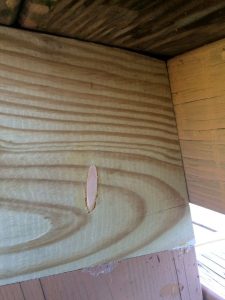
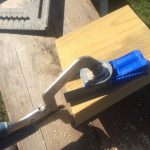
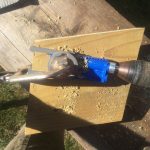
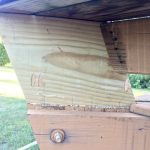
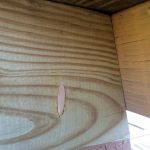
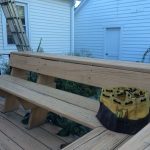
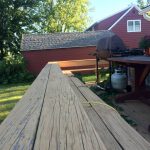
Recent Comments